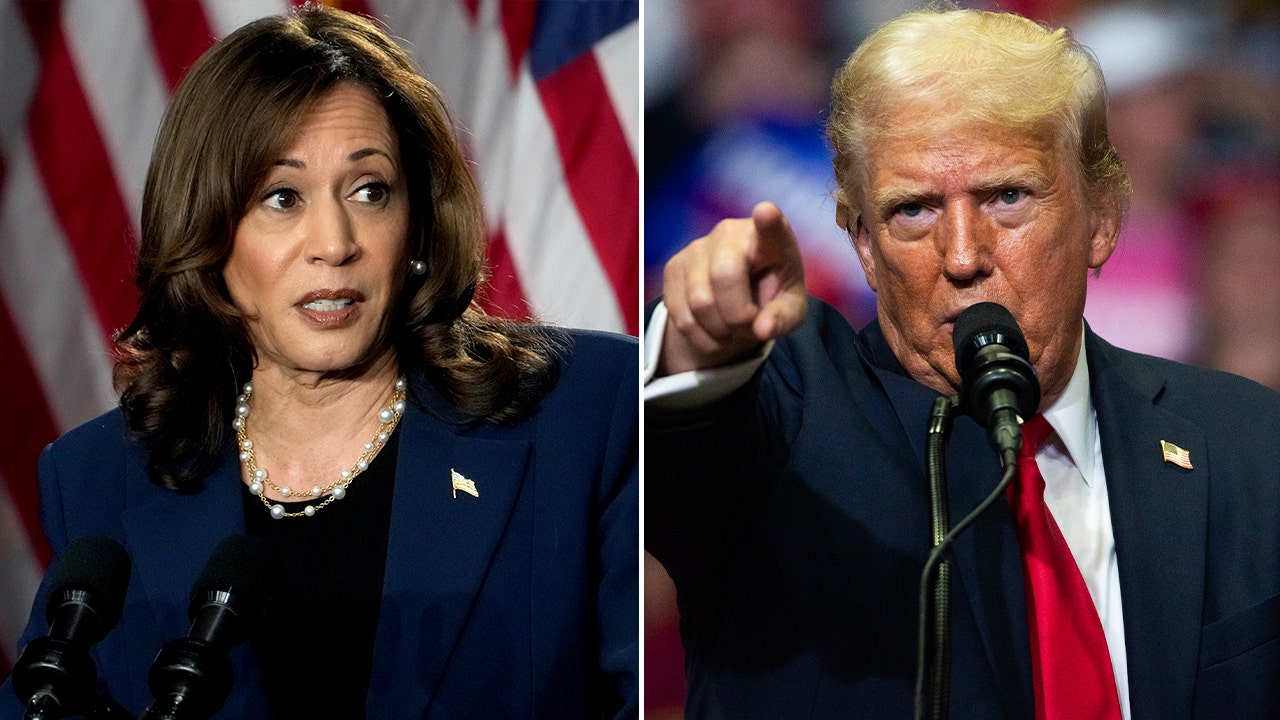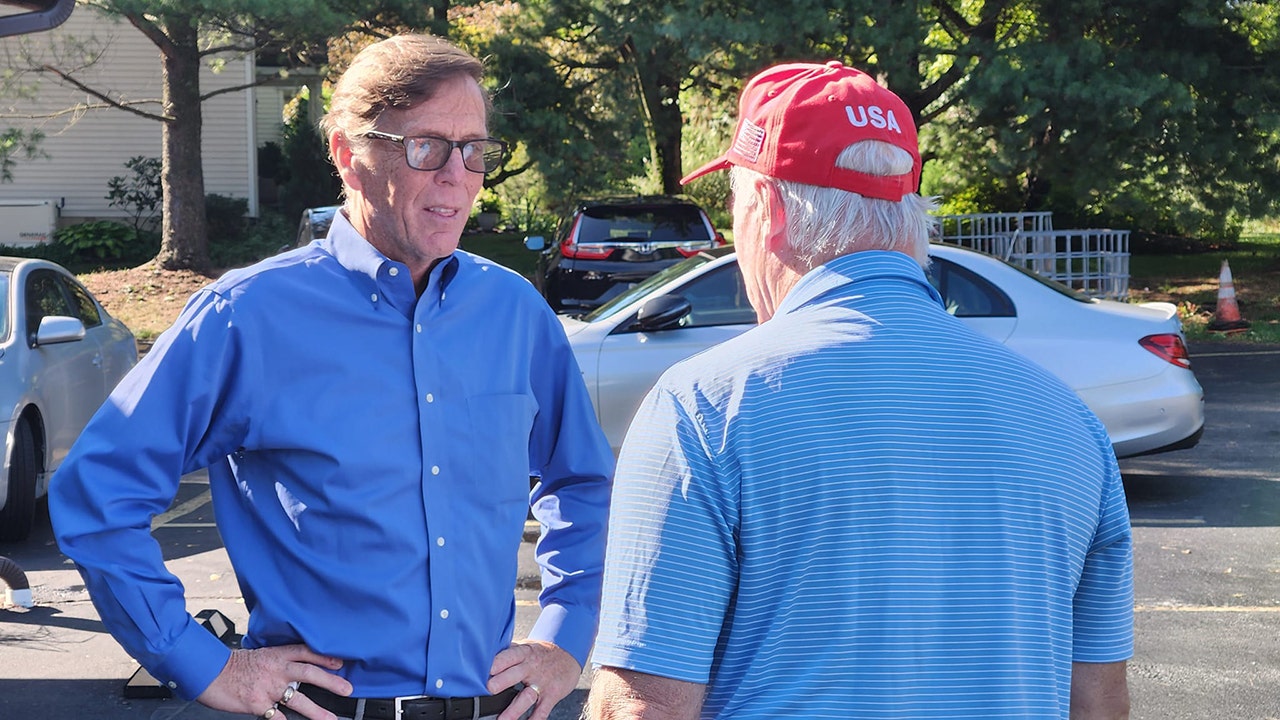Business
Column: Opposing vaccine mandates, Trump exposes kids to disease
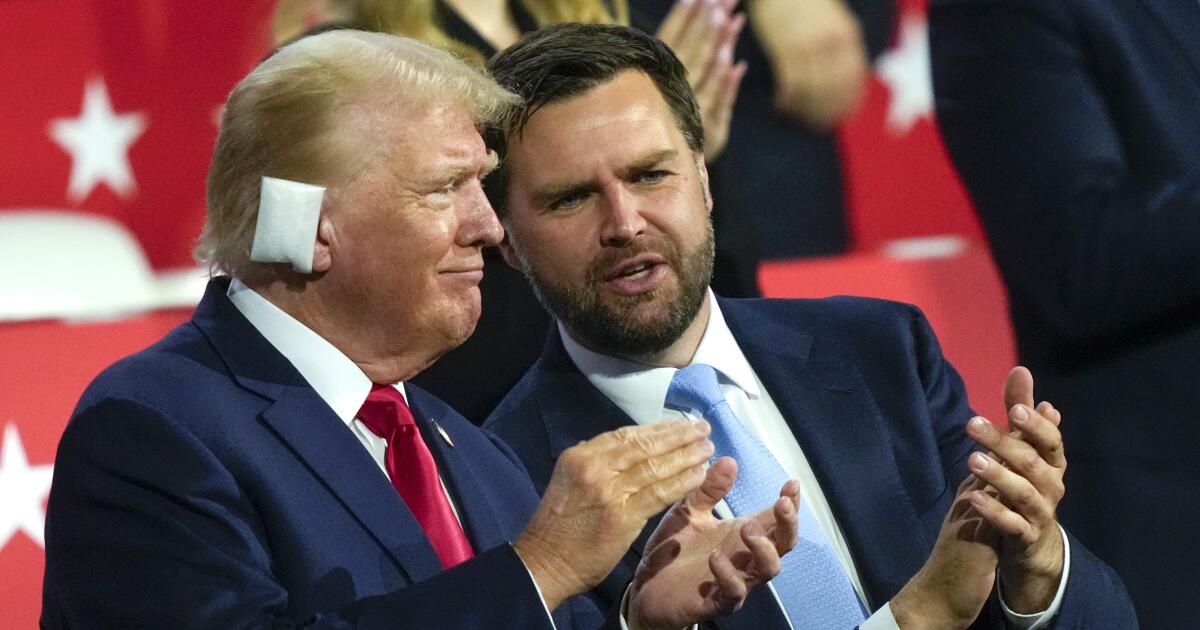
As most of us have learned from experience, tracking the self-contradictions of political campaigns is usually a waste of time. Stump speeches are tailored to individual audiences, campaign promises are made to be broken or forgotten and candidates’ positions evolve over time.
But Donald Trump has been making one promise to his rally audiences that should make the parents of school-age children sit up and take notice. I first noticed it in February. Since then, it has apparently become a standard line in his performance.
Here’s how he put it at a rally over the weekend in St. Cloud, Minn.: “I will not give one penny to any school that has a vaccine mandate or a mask mandate.”
If you want to experiment on somebody’s kids, Kamala Harris, AOC, and so forth, have your own kids, lay off of mine….This is about doing what you want to do with your own family, with your own rights.
— JD Vance expresses an anti-vaccination mantra
Trump’s repetition of this line has been largely ignored by a press corps and political pundits focused on his apparent promise to make voting in elections a thing of the past. Yet it takes deadly aim — I use the term “deadly” advisedly — at public health in America, including our nearly 120-year tradition of enforcing vaccine mandates on adults and schoolchildren alike.
It’s also decidedly at odds with the comments by his running mate, J.D. Vance, about the nobility of raising children and the supposed irresponsibility and fecklessness of the childless.
Vance, as has been widely reported, has carried on fatuously for years about how childless people have an insufficiently heartfelt interest in democracy and the republic. He has argued for higher tax rates on the childless, denigrated political and business leaders as “childless cat ladies,” etc., etc.
Yet when Vance was asked about vaccine mandates on Fox News during his Senate campaign in 2021, here’s what he said: “I am sick of these bureaucrats experimenting on my children because that’s what they’re doing…. If you want to experiment on somebody’s kids, Kamala Harris, AOC, and so forth, have your own kids, lay off of mine.”
As part of that same spiel, he put in a pitch for “bodily autonomy,” one of the catchphrases of anti-vaccine fanatics. “This is about doing what you want to do with your own family, with your own rights,” he said.
Whether Trump is even aware of the implications of his anti-vaccine promise is uncertain; he doesn’t project any more awareness of the meaning of his own words than an AI chatbot. He seems to enjoy repeating the line because it elicits cheers from his audiences, who react as if in the grip of a Pavlovian reflex.
But let’s examine those implications.
To begin with, vaccines are among the most important and effective medical achievements in human history. They have proved their value for more than a century.
U.S. cases of smallpox averaged more than 29,000 a year during the 20th century, according to the Centers for Disease Control and Prevention; in 2023 there were none. Measles cases averaged 530,217 a year during that time span; in 2023 there were 47. Pertussis, an endemic child-killer known as whooping cough: 200,752 cases a year during the last century; in 2023, there were 5,611. Polio and rubella: virtually wiped out by vaccination.
Vaccines have almost eliminated these lethal 20th-century diseases in the U.S.
(Centers for Disease Control and Prevention)
What accounts for much of this success has been, yes, vaccine mandates, especially in our schools. Every state in the union requires that children entering their public school systems at any grade be vaccinated against a host of childhood diseases.
In Minnesota, where that rally crowd witlessly cheered Trump’s promise to end mandates, children entering kindergarten are required to have had at least four doses of the diphtheria/tetanus/pertussis (DTaP) vaccine, at least three polio shots, two doses of the measles/mumps/rubella (MMR) vaccine, three doses of the hepatitis B shot and two of the chickenpox vaccine.
To put it another way, advocating for an end to vaccine mandates is tantamount to calling for waves of life-threatening diseases to wash across our school-age population. We have already seen outbreaks of polio and measles attributable to the rise of the anti-vaccine movement. The U.S. is currently undergoing a surge in measles, with 188 cases recorded by the CDC so far this year — the highest number since 2019, when there were 1,274 cases, also attributable to anti-vaxxers.
Until very recently, the legality and constitutionality of vaccine mandates was never questioned by the courts. The tradition began in 1905, when the Supreme Court upheld compulsory smallpox vaccination in Boston, where the disease was raging.
In that case, Justice John Marshall Harlan, writing for a 7-2 majority, set forth the principle that individual rights could be made subservient to the public interest: “Real liberty for all could not exist,” Harlan wrote, “under the operation of a principle which recognizes the right of each individual person to use his own, whether in respect of his person or his property, regardless of the injury that may be done to others.”
The Supreme Court upheld that principle in a 1922 case, this time unanimously.
Over the intervening decades it became clear that school vaccination mandates were a highly effective tool for fighting diseases. Local measles outbreaks during the 1970s were consistently quelled when authorities enforced vaccination requirements.
A natural laboratory experiment occurred in 1970 in the twin cities of Texarkana, Texas, and Texarkana, Ark. As vaccine expert Paul Offit recalled in his recent book about vaccination during the COVID pandemic, “Tell Me When It’s Over,” Arkansas, but not Texas, required vaccines for schoolchildren: Of the 600 measles cases in the metropolitan area, 96% occurred on the Texas side.
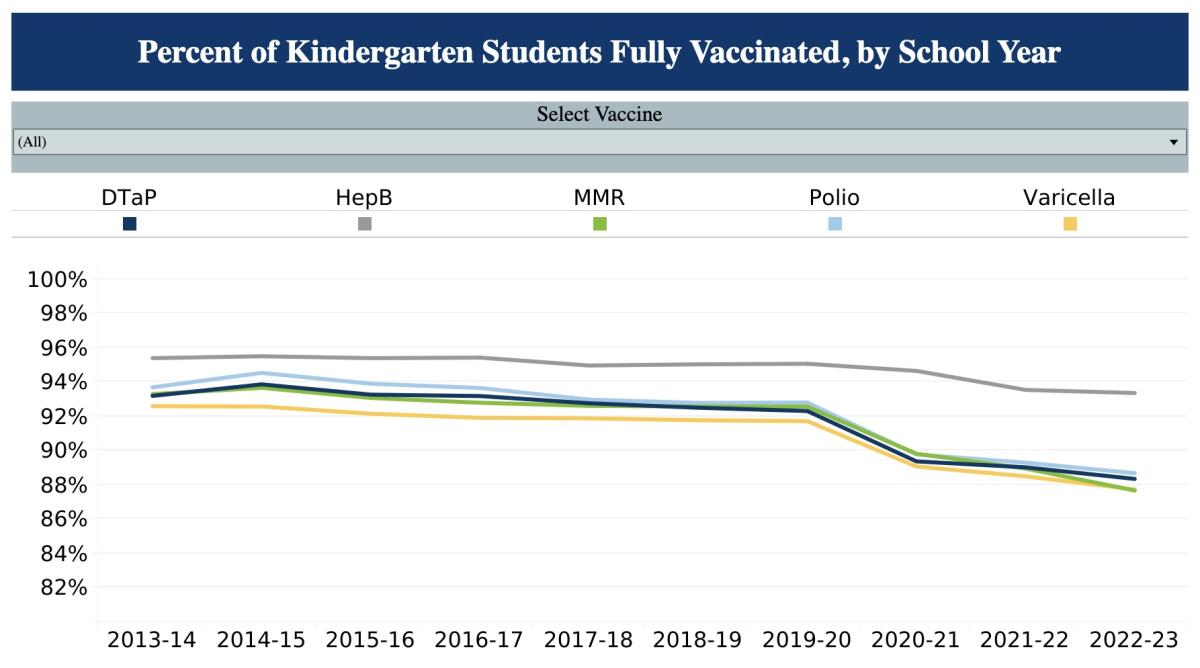
Vaccine rates for childhood diseases such as measles have been declining for years in Minnesota, where Trump attacked vaccine mandates.
(Minnesota Dept. of Health)
It’s one thing for a patient to refuse a tetanus shot after they step on a rusty nail, Offit observed; tetanus is not a contagious disease. But refusing vaccination against measles or COVID exposes one’s entire community to infection. As Offit wrote, it’s tantamount to claiming, “It is my constitutional right to catch and transmit a potentially fatal infection.”
Over time, however, state and local authorities have turned complacent. Religious exemptions proliferated, and then exemptions for claimed philosophical or “moral” beliefs. (Only two states, Mississippi and West Virginia, reject any such exemptions, allowing them only on medical grounds in rare instances; as Offit reports, those states have consistently had the highest vaccination rates in the country.)
Meanwhile the anti-vaccine movement expanded. It was spurred in part by a fraudulent study published in Britain in 1998, claiming a connection between the MMR vaccine and autism. Although no such link has been found by scientifically validated studies since then, the claim continues to suppress MMR vaccination rates in Britain and parts of the U.S.
But it also reflects the extent to which vaccines became victims of their own success — measles became so rare in the U.S. that it was actually declared eradicated in the U.S. in 2000. So rejecting the MMR vaccine seemed to be no great danger. But measles is back.
The anti-vaccine camp has seized on the threadbare shibboleths of “medical freedom” and “health freedom” — or “bodily autonomy,” as Vance put it. This tied in with tea party anti-government orthodoxy, especially after the rollout of COVID-19 vaccines, which for some unaccountable reason became the targets of heightened, partisan hostility.
Agitation against the COVID shots has gained particular purchase on the far right. Witness the presidential campaign of anti-vaccine crackpot Robert F. Kennedy Jr. and the dangerous attack on medical science by Florida Gov. Ron DeSantis and his quack henchman, Florida Surgeon General Joseph Ladapo.
Right-wing federal judges, chiefly those appointed by Trump, have bought into the anti-vaccine mantras. In 2022, the Supreme Court blocked a Biden administration mandate that large employers require their workers to be vaccinated or be tested for COVID once a week. In June, a three-judge panel of the 9th Circuit Court of Appeals in San Francisco allowed a lawsuit challenging a COVID vaccine mandate for Los Angeles Unified School District workers to go ahead. The ruling was 2 to 1; both judges in the majority are Trump appointees.
The consequences of opposition to vaccine mandates can’t be overestimated. They’re visible in Minnesota, where Trump’s attack on mandates was so lustily cheered in an outburst of what I’ve called “herd stupidity.”
From 2013 through 2023, the percentage of Minnesota kindergartners fully vaccinated against measles fell from more than 93% to less than 88%. The polio immunization rate declined from 93.7% to 88.7%. Rates of DTaP, hepatitis B and chickenpox vaccination have similarly declined. For some of these diseases, the vaccine levels have fallen below those necessary to protect the entire population from possible outbreaks.
So, sure. Call Trump and Vance “weirdos” if that suits your political outlook. But don’t forget that some policies they’re pushing are mortal threats to your health.

Business
Study details 'transformative' results from L.A. pilot that guaranteed families $1,000 a month
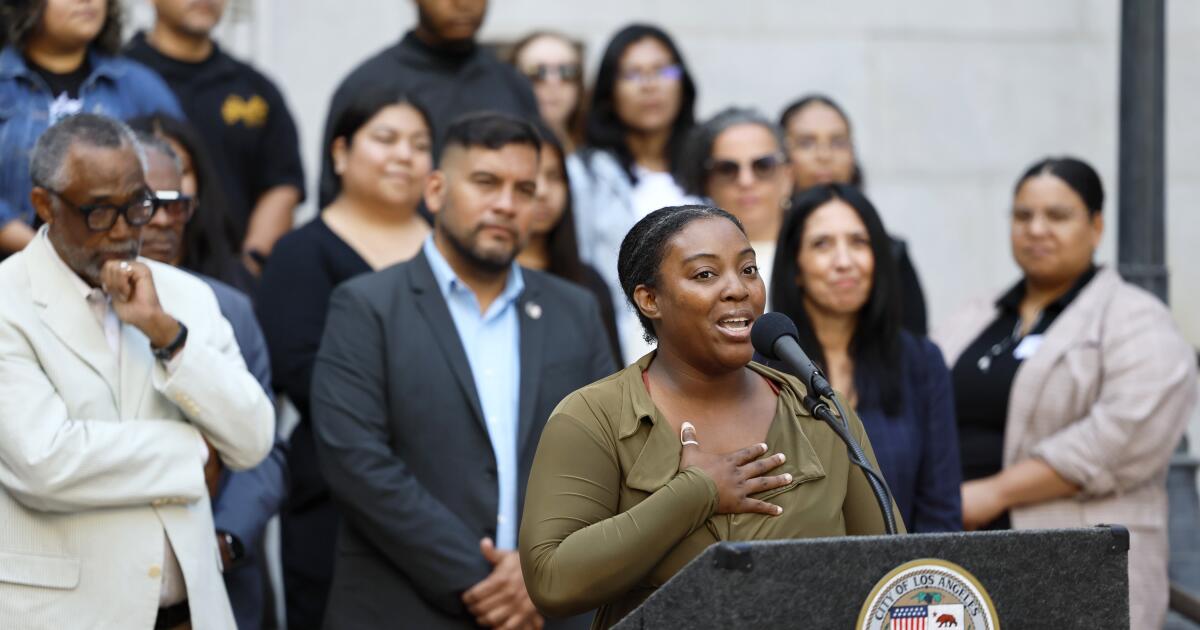
Some of L.A.’s poorest families received cash assistance of $1,000 a month as part of a 12-month pilot project launched nearly three years ago. There were no strings attached and they could use the money however they saw fit.
Now, a new study finds that the city-funded program was overwhelmingly beneficial.
Participants in the program experienced a host of financial benefits, according to an analysis co-authored by University of Pennsylvania and UCLA researchers. Beyond that, the study found, the initiative gave people the time and space to make deeper changes in their lives. That included landing better jobs, leaving unsafe living conditions and escaping abusive relationships.
“If you are trapped in financial scarcity, you are also trapped in time scarcity,” Dr. Amy Castro, co-founder of the University of Pennsylvania’s Center for Guaranteed Income Research, told The Times. “There’s no time for yourself; there’s no time for your kids, your neighbors or anybody else.”
The Basic Income Guaranteed: Los Angeles Economic Assistance Pilot, or BIG:LEAP, disbursed $38.4 million in city funds to 3,200 residents who were pregnant or had at least one child, lived at or below the federal poverty level and experienced hardship related to COVID-19. Participants were randomly selected from about 50,000 applicants and received the payments for 12 months starting in 2022.
Castro and her colleagues partnered with researchers at UCLA’s Fielding School of Public Health to compare the experiences of participants in L.A.’s randomized control trial — the country’s first large-scale guaranteed-income pilot using public funds — with those of nearly 5,000 people who didn’t receive the unconditional cash.
Researchers found that participants reported a meaningful increase in savings and were more likely to be able to cover a $400 emergency during and after the program. Guaranteed-income recipients also were more likely to secure full-time or part-time employment, or to be looking for work, rather than being unemployed and not looking for work, the study found.
“Instead of taking the very first job that was available, that might not have been a lasting, good fit for the family, [the participants were] saying, ‘Hold on a minute, I have a moment to sit and think and breathe, and think about where I want my family to be,’ ” said Dr. Stacia West, also a co-founder of the University of Pennsylvania’s Center for Guaranteed Income Research.
In a city with sky-high rents, participants reported that the guaranteed income functioned as “a preventative measure against homelessness,” according to the report, helping them offset rental costs and serving as a buffer while they waited for other housing support.
It also prevented or reduced the incidence of intimate partner violence, the analysis found, by making it possible for people and their children to leave and find other housing. Intimate partner violence is an intractable social challenge, Castro said, so to see improvements with just 12 months of funding is a “pretty extraordinary change.”
People who had struggled to maintain their health because of inflexible or erratic work schedules and lack of child care reported that the guaranteed income provided the safety net they needed to maintain healthier behaviors, the report said. They reported sleeping better, exercising more, resuming necessary medications and seeking mental health therapy for themselves and their children.
Compared with those who didn’t receive cash, guaranteed income recipients were more likely to enroll their kids in sports and clubs during and after the pilot.
Los Angeles resident Ashley Davis appeared at a news conference Tuesday about the study findings and said that her health improved because she could afford to buy fruits, vegetables and smoothies. Before, she was pre-diabetic and “my cholesterol was going through the roof,” Davis said.
“I was neglecting my own needs,” said Davis, who described herself as a single mother of a special-needs child. She switched careers and is now studying to be a nurse, she said.
Abigail Marquez, general manager of the Community Investment for Families Department, which helped oversee BIG:LEAP, said she’s spent 20 years working on various anti-poverty programs.
“I can say confidently that this is by far the most transformative program,” Marquez said.
BIG:LEAP was one of the largest of more than 150 guaranteed-income pilot programs launched nationwide in recent years. The program was funded through the city budget and included $11 million that city leaders moved from the Police Department budget in response to nationwide protests after the murder of George Floyd by a Minneapolis police officer in 2020.
Despite the positive research findings, programs like BIG:LEAP have raised concerns among some taxpayer groups.
“It’s simply wrong for the city government to take tax dollars earned and paid by people who are trying to pay their own bills and transfer that money to other people chosen by the government to receive it,” the Howard Jarvis Taxpayers Assn. said in a statement. “Guaranteed-income programs are appropriately funded voluntarily by charitable organizations and foundations, not forcibly through the tax code.”
Councilmember Curren Price, whose South Los Angeles district includes some of the city’s most impoverished neighborhoods, introduced a motion Tuesday to continue a version of the pilot with a focus on people in abusive relationships and young adults in need of mental health and emotional support.
Price said he would contribute $1 million toward the next phase from his council funds. Councilmember Hugo Soto-Martinez also pledged $1 million.
Beyond that, it’s not clear where the next round of funding would come from. Price expressed hope the city would continue to support the effort through the general budget.
“I don’t know how realistic it is that it’s going to be $40 million again,” Price said. “But I think it’s realistic that we could receive something.”
This article is part of The Times’ equity reporting initiative, funded by the James Irvine Foundation, exploring the challenges facing low-income workers and the efforts being made to address California’s economic divide.
Business
Read the Letter to Sullivan & Cromwell

300 New Jersey Avenue, N.W., Suite 900
Washington, D.C. 20001
Phone: 202-465-8728
July 30, 2024
Joseph C. Shenker Esq.
Sullivan & Cromwell LLP
125 Broad Street
New York, NY 10004
Re: Blacklisting detractors of the Israeli government provoked by the indiscriminate Israeli
killings of infants, children, women, and men in Gaza, including a siege openly earmarked by no
water, no food, no shelter, no power, no medicine, no journalists.
Dear Mr. Shenker:
This letter responds to your remarks reported in The New York Times, “A Wall Street Law Firm
Wants to Define Consequences of Israel Protests,” by Emily Flitter (July 9, 2024).
Speaking as a leader of Sullivan & Cromwell, you stated all applicants for employment would be
vetted for lawful statements, actions, or beliefs that your law firm defines as antisemitic,
including mingling with pro-Palestinian demonstrators chanting “From the river to the sea,
Palestine will be free.” Will Sullivan & Cromwell establish an Index of Forbidden words, songs,
signs, or sayings that would be off limits to any of the firm’s employees?
We are concerned about the absence of due process safeguards that could destroy an applicant’s
professional career in addition to Sullivan & Cromwell’s apparent complacency with hiring
lawyers who engage in hate speech or violence against Arabs or other races. Doesn’t that
discrepancy smack of George Orwell’s Animal Farm, “All animals are equal, but some or more
equal than others?” Is Sullivan & Cromwell, now in its 145th year, seeking to make amends from
its earlier history of notorious discrimination against Jews until the 1950s, not to mention biases
against Muslims and Arabs?
There is no articulable definition of verbal antisemitism free from manipulation for ulterior
purposes. Sullivan & Cromwell seems to equate anti-Zionism with antisemitism. But renowned
scholars of Judaism like Allan C. Brownfeld insist that Zionism is a form of political idolatry that
elevates worship of the State above worship of the Torah and God. Would Sullivan & Cromwell
hire Mr. Brownfeld?
Will Sullivan & Cromwell provide applicants a fair warning of what words or acts will be treated
as antisemitic? What will be Sullivan & Cromwell’s standard of proof? Reasonable suspicion,
probable cause, a preponderance, clear and convincing, beyond a reasonable doubt, or non-
fantastic speculation? What rules of evidence will govern the antisemitism vetting? Will hearsay
be admitted? How will documents be authenticated? Will applicants have a right to counsel to
voice objections and a right to confront their accusers? Who will do the vetting? What selection
Business
Fred Segal closes its remaining stores, ending a Los Angeles fashion era
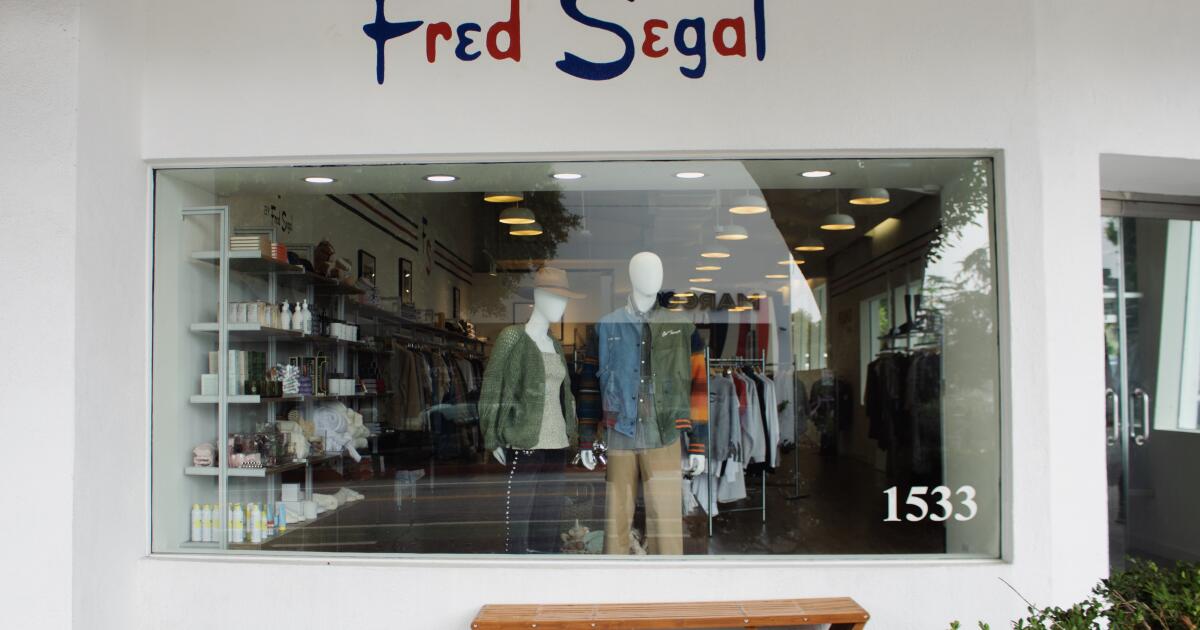
Fred Segal, once a centerpiece to the Los Angeles fashion scene, closed its two remaining stores Tuesday, bringing a quiet end — at least for now — to a name that endured for decades as a shopping destination.
The brand, which once had nine stores in California and locations in Switzerland and Taipei, succumbed to a challenging retail landscape, never recovering from the impact the COVID-19 pandemic had on sales despite being a fixture of Los Angeles fashion since the 1960s, said owner Jeff Lotman.
When Lotman bought the company in 2019, he said he had no plans to run the day-to-day operations of the stores, but was forced into the role by the pandemic.
“Everything just fell apart and then I sort of had to become a retailer, which is not what I planned to do,” he said. “I knew nothing about retail.”
Instead, Lotman, who owns the brand licensing company Global Icons, had aspired to oversee a dramatic expansion of the Fred Segal brand that was supposed to include around 20 new shops in major cities across the country and a move into home decor and accessories.
“It’s not that retail is dying,” Lotman said at the time. “Boring retail is dying.”
The marquee name first appeared in 1961, when Fred Segal opened a small shop in West Hollywood, which grew into a cultural touchstone interwoven into the identity of Los Angeles. Its high-end, California-inspired line of clothes included bikinis, denim shorts and tank tops, often blending luxury with a laid-back look.
The company made its way into popular culture, getting referenced in shows like “Beverly Hills, 90210” and “Dawson’s Creek” and attracting celebrity customers such as Jennifer Aniston and Diana Ross.
Before the pandemic, Lotman said, the company had pending deals to open stores in Dubai, Canada and Japan. The two stores closing Tuesday are in West Hollywood and Malibu.
“Sixty years the company’s been around and it’s a shame that it’s finally coming to a close,” Lotman said.
One of the company’s downfalls was not having enough self-branded products, Lotman said. Fred Segal stores carried close to 200 outside brands but had few of their own offerings.
“That’s really what we needed to develop to make this thing work,” Lotman said. “Retail is hard and being a multi-brand retailer is even harder.”
While the majority of the Fred Segal empire is shut down, including its online store, a Fred Segal Home furnishings store will remain open in Culver City.
The Segal family owns the Fred Segal trademark, said Lotman, who was licensing the trademark. Any decision about whether to open new stores or begin selling online again would be up to them, he said.
Larry Russ, the family’s attorney, said this is not the end of the road for the brand, but could not share more information.
“We are going to be looking for a new operator to open up more stores in the future,” he said.
Lotman said he isn’t aware of any concrete plans to reopen business, but he’s optimistic.
“Hopefully someone may pick it back up and get it to go,” he said. “It is truly one of the great fashion brands out there.”
-
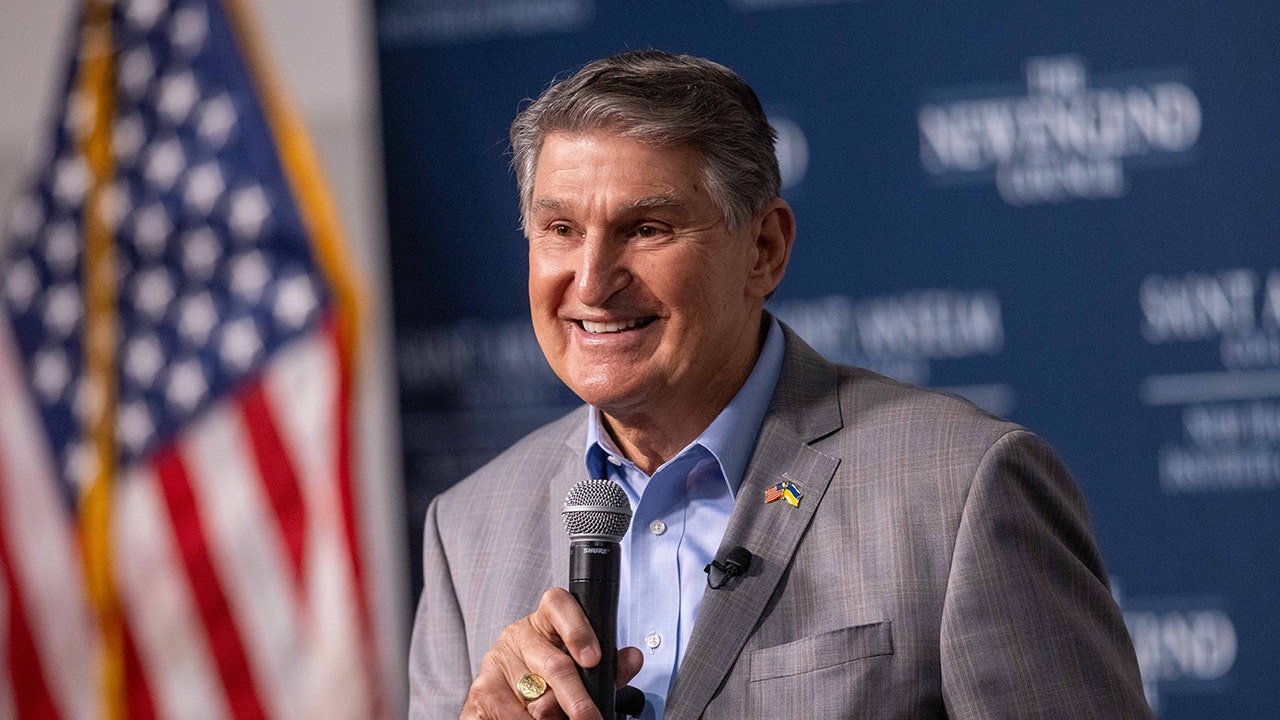
 Politics1 week ago
Politics1 week agoManchin considers re-registering as Democrat to run for president
-

 News1 week ago
News1 week agoHow the Trump Rally Gunman Had an Edge Over the Countersnipers
-
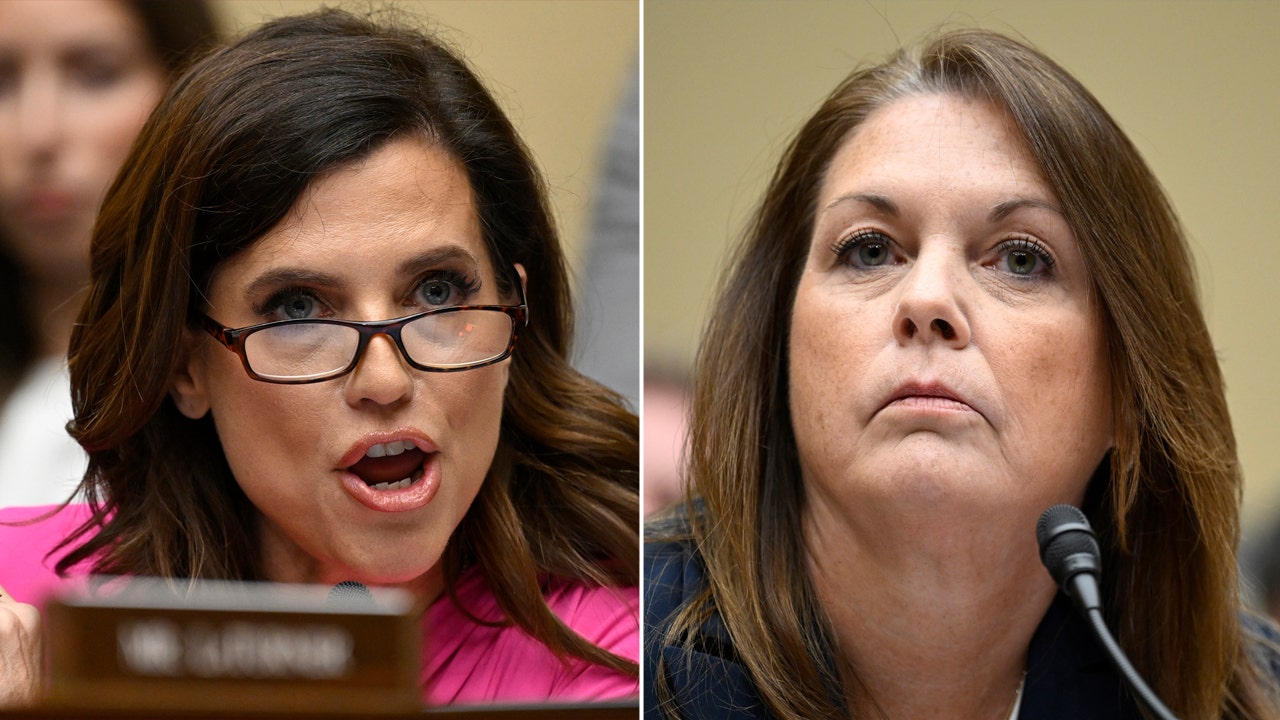
 Politics1 week ago
Politics1 week agoTop five moments from Secret Service director's hours-long grilling after Trump assassination attempt
-

 Politics1 week ago
Politics1 week agoDem strategists say Harris 'only practical choice' as party leaders begin endorsing her
-

 News1 week ago
News1 week agoMayorkas names panel to conduct review of Trump assassination attempt
-

 News1 week ago
News1 week agoGeorge Clooney Endorses Kamala Harris, Says Biden Is ‘Saving Democracy’
-

 News1 week ago
News1 week agoVideo: Secret Service Director Faces Bipartisan Calls to Resign
-
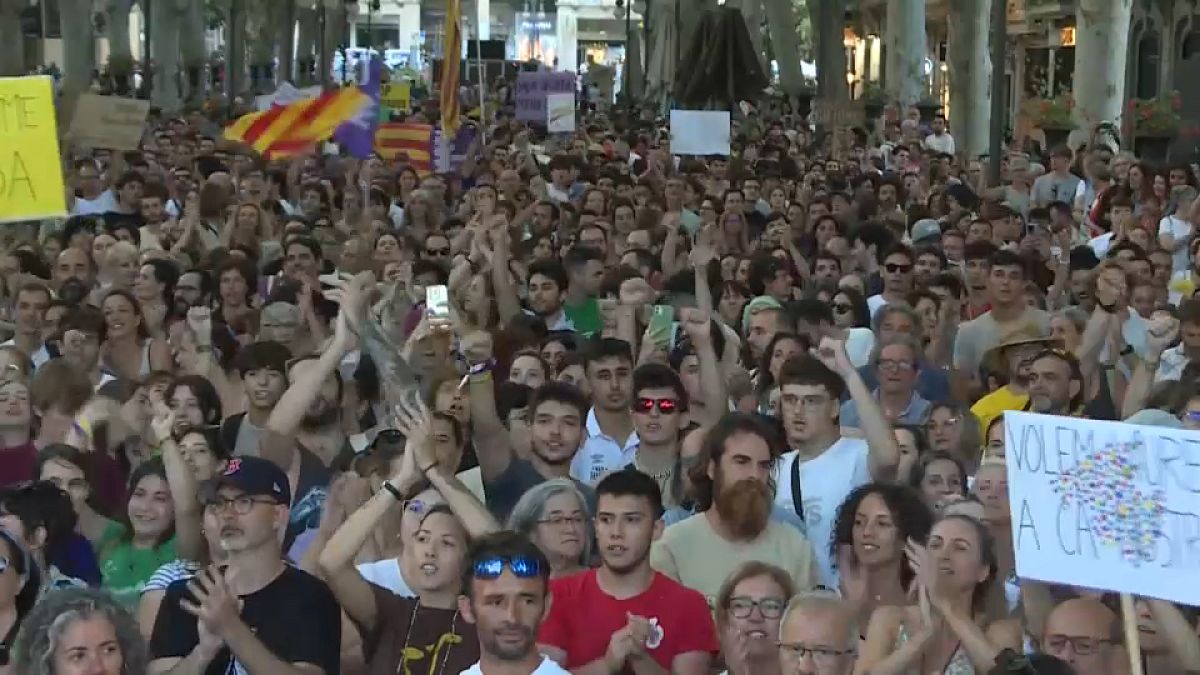
 World1 week ago
World1 week agoThousands in Mallorca demand 'less tourism, more life'











